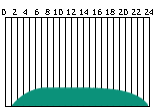Inside the pancreas, beta cells make the hormone insulin. With each meal, beta cells release insulin to help the body use or store the blood glucose it gets from food. In people with type 1 diabetes, the pancreas no longer makes insulin. The beta cells have been destroyed and they need insulin shots/injections to use glucose from meals.
People with type 2 diabetes make insulin, but their bodies don't respond well to it. Some people with type 2 diabetes need diabetes pills or insulin injections to help their bodies use glucose for energy.
Insulin cannot be taken as a pill. The insulin would be broken down during digestion just like the protein in food. Insulin must be injected into the fat under your skin for it to get into your blood.
There are many different insulins for many different situations and lifestyles and there are more than 10 types of Insulin in the market. These insulins differ in how they are made, how they work in the body, and price. Insulin is made in labs to be identical to human insulin or it comes from animals (pigs/Cows].
Types of Insulin
Different types of insulin preparations are distinguished by the speed at which the injected insulin is absorbed from the layer under the skin into the blood (onset of action) and by the time it takes for all the injected insulin to be absorbed (duration of action).
It is important to note that the duration and absorption times described below are only approximate. Absorption of insulin always depends on individual factors.
Insulin analogues
Rapid-acting insulin analogue

Onset: 10-20 minutesMaximum effect: 1-3 hours Duration: 3-5 hours
Eg;insulin lispro (Eli Lilly), insulin aspart (Novo Nordisk), or insulin glulisine (sanofi-aventis),
Long-acting insulin analogue
Onset: 1 hour Duration: 24 hours
Eg;glargine[Lantus] and detemir[Levemir]
Biphasic insulin analogue
Onset: 10-20 minutesMaximum effect: 1-4 hours Duration: up to 24 hours
Eg; Novomix,Humalog
Human insulins
Short-acting insulin(soluble human insulin)
This insulin comes in a clear solution, and is intended to be given at meals. An injection should be followed by a meal or snack containing carbohydrates within 30 minutes.
Onset: within 30 minutesMaximum effect: 1-3 hours Duration: 8 hours
Eg;Actrapid,Humisulin R
Intermediate-acting insulin(isophane human insulin, NPH)
An insulin formulation that contains a substance, which delays the absorption of insulin. The combination of insulin and a delaying substance usually results in the formation of crystals that give the liquid a cloudy look. The insulin crystals must be homogenised (mixed) evenly before each injection. Intermediate-acting insulin takes approximately 1 1/2 hours before it begins to have an effect. The largest effect occurs between 4 and 12 hours after the injection, and after approximately 24 hours, the whole dose has been absorbed.
Onset: within 1.5 hours Maximum effect: 4-12 hours Duration: 24 hours
eg;Human Insulin N,Insulatard
Premixed insulin(biphasic human insulin consisting of e.g. 30% soluble and 70% isophane insulin)
Insulin containing a combination of a short-acting and an intermediate-acting insulin in standard proportions. These products eliminate the difficulty some individuals have while mixing insulin. The products come in several different premixed combinations containing 10-50% short-acting insulin and 90-50% intermediate-acting insulin, with the ratio of 30% short acting and 70% intermediate acting being the most used.
Onset: within 30 minutes Maximum effect: 2-8 hours Duration:24 hours
eg; Human Mixtard,Huminsulin 30/70
Two new injectable drugs that are not Insulins recently been approved for use in Diabetes
Pramlintide (brand name Symlin) is a synthetic form of the hormone amylin, which is produced along with insulin by the beta cells in the pancreas. Amylin, insulin, and another hormone, glucagon, work in an interrelated fashion to maintain normal blood glucose levels.
Pramlintide injections taken with meals have been shown to modestly improve A1C levels without causing increased hypoglycemia or weight gain and even promoting modest weight loss. The primary side effect is nausea, which tends to improve over time and as an individual patient determines his or her optimal dose.
Because of differences in chemistry, pramlintide cannot be combined in the same vial or syringe with insulin and must be injected separately. Pramlintide has been approved for people with type 1 diabetes who are not achieving their goal A1C levels and for people with type 2 diabetes who are using insulin and are not achieving their A1C goals.
Exenatide (brand name Byetta) is the first in a new class of drugs for the treatment of type 2 diabetes called incretin mimetics. Exenatide is a synthetic version of exendin-4, a naturally-occurring hormone that was first isolated from the saliva of the lizard known as a Gila monster. Exenatide works to lower blood glucose levels primarily by increasing insulin secretion. Because it only has this effect in the presence of elevated blood glucose levels, it does not tend to increase the risk of hypoglycemia on its own, although hypoglycemia can occur if taken in conjunction with a sulfonylurea. The primary side effect is nausea, which tends to improve over time.
Like pramlintide, exenatide is injected with meals and, as with pramlintide, patients using exenatide have generally experienced modest weight loss as well as improved glycemic control. Exenatide has been approved for use by people with type 2 diabetes who have not achieved their target A1C levels using metformin, a sulfonylurea, or a combination of metformin and a sulfonylurea.
Modified and adapted from ADA and Novo Nordisk websites





No comments:
Post a Comment